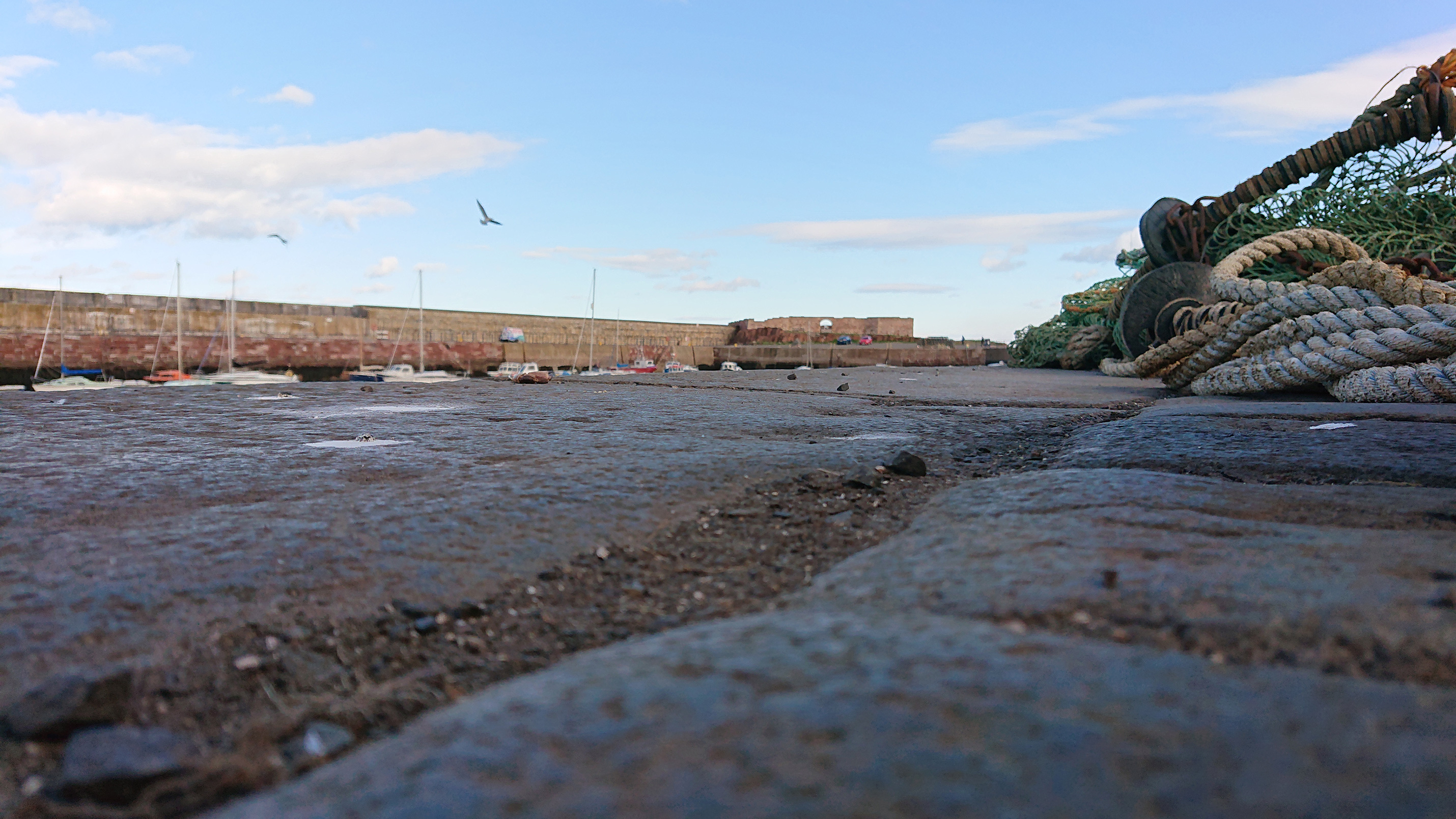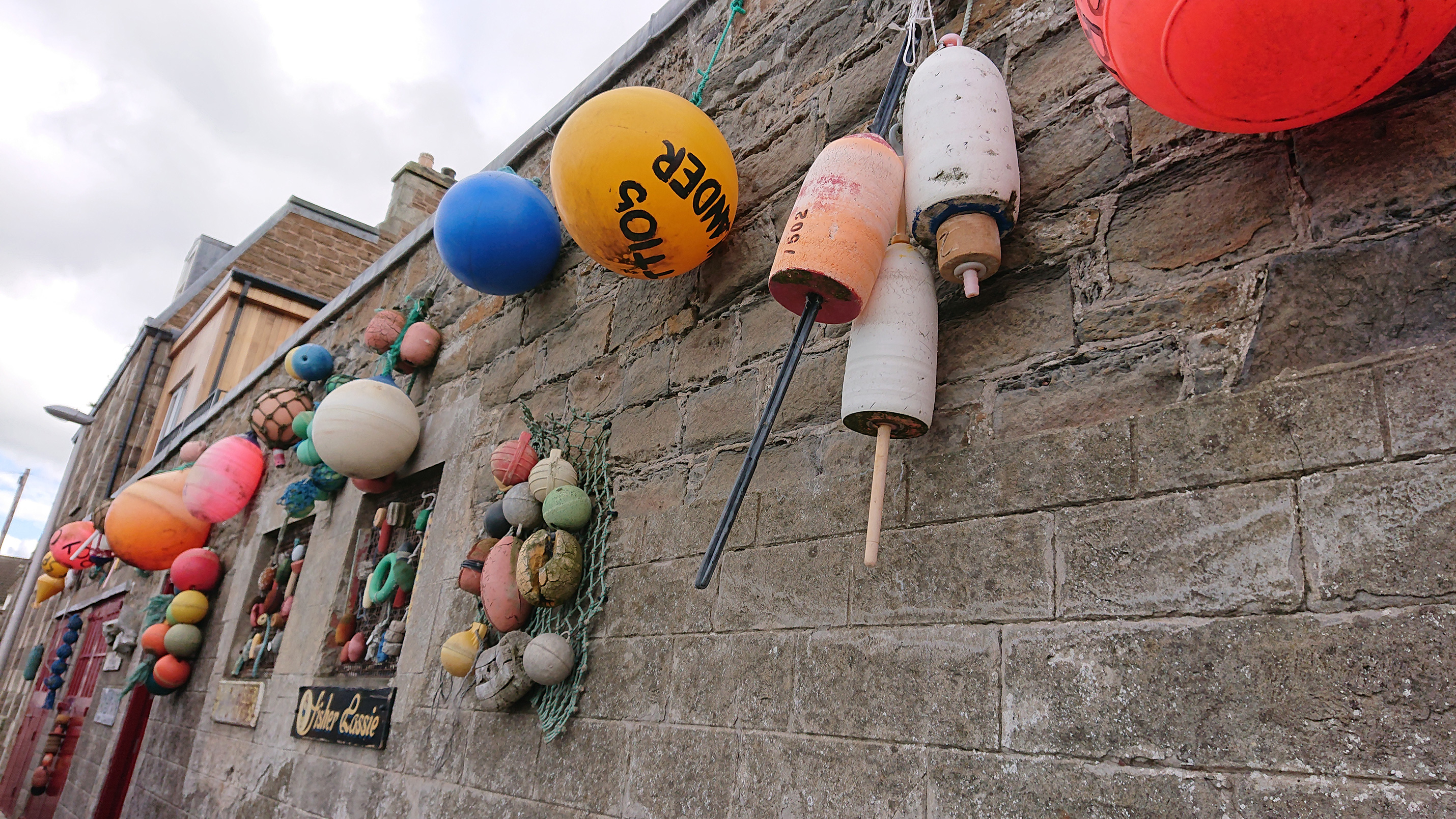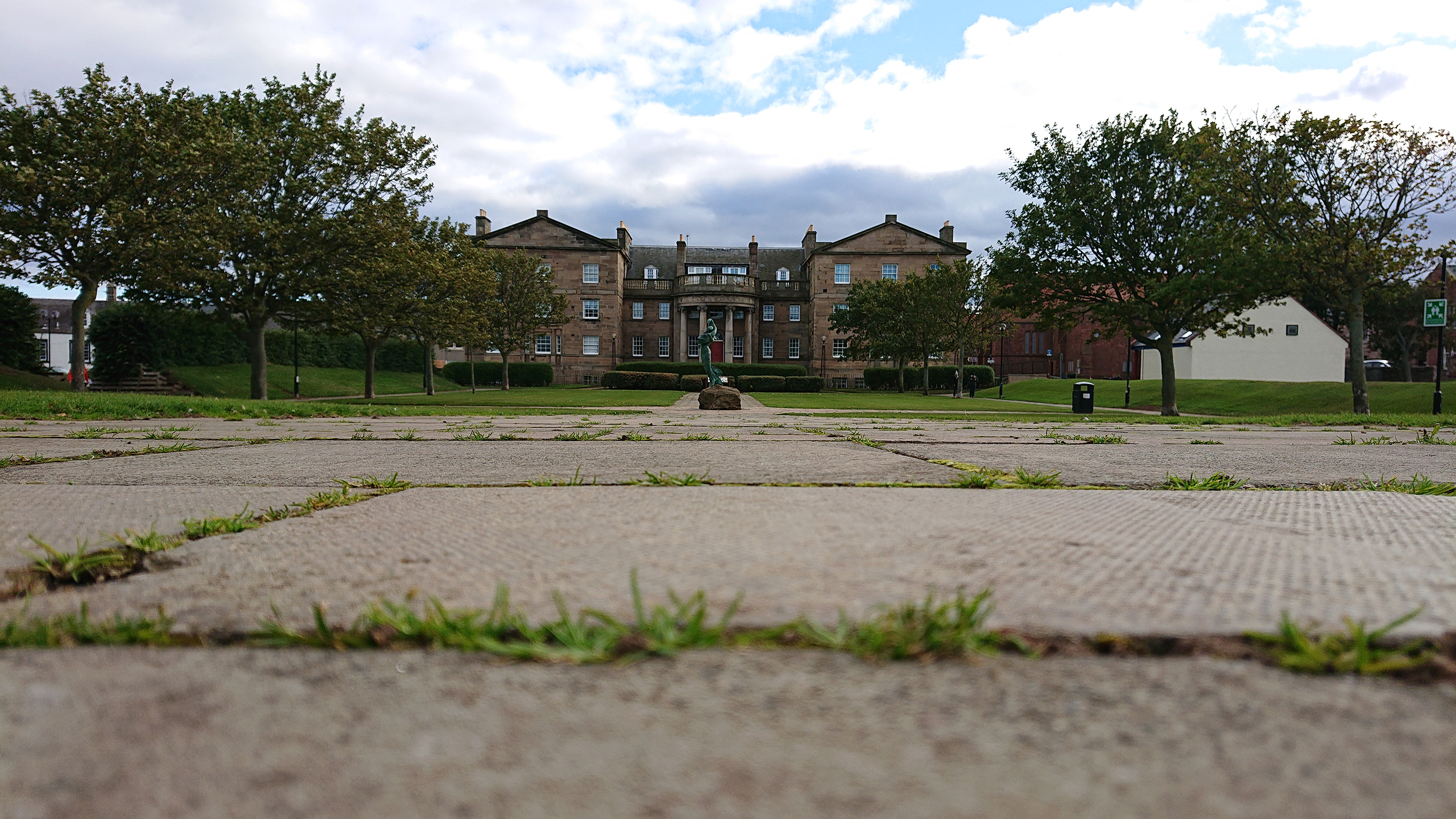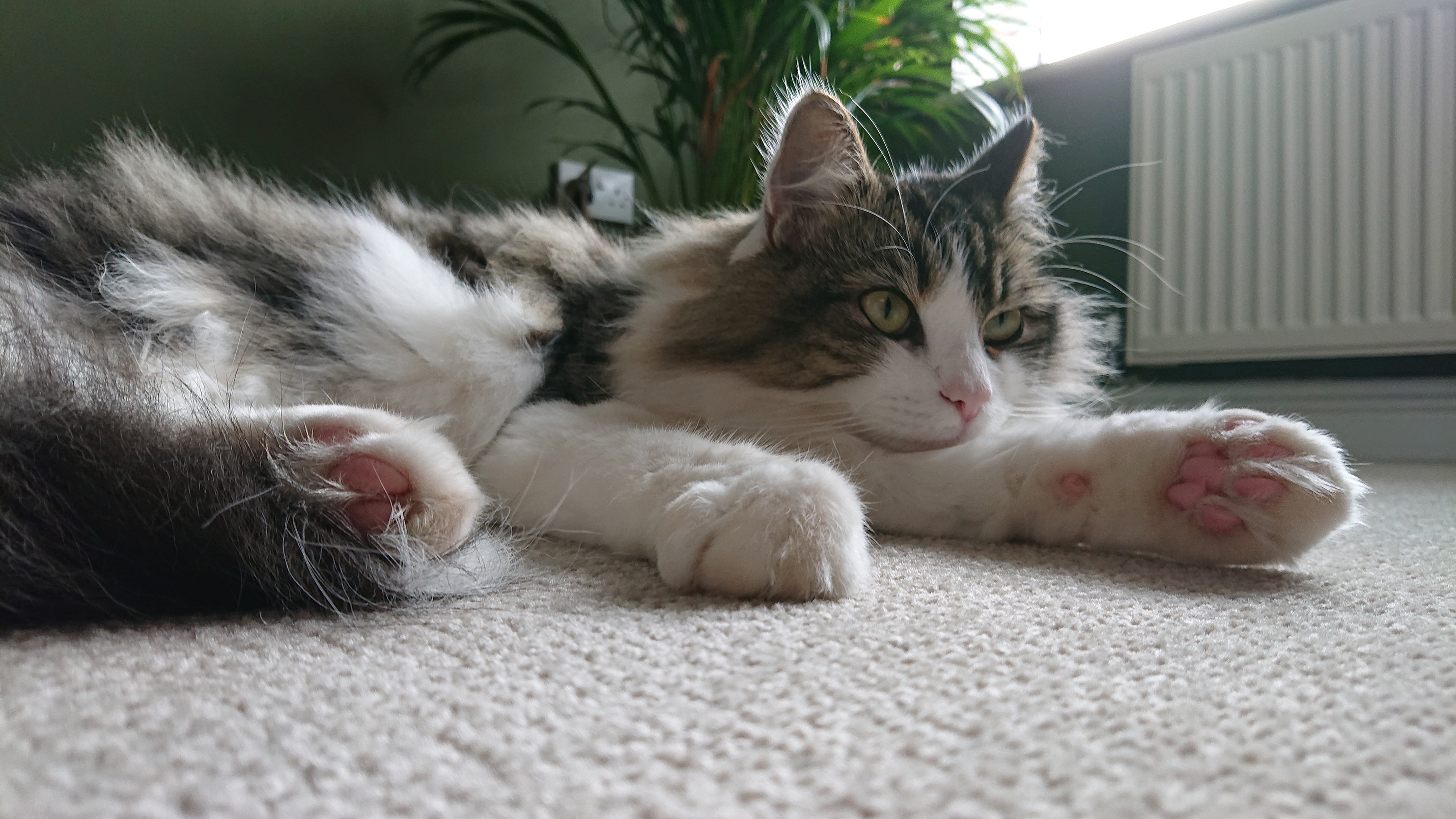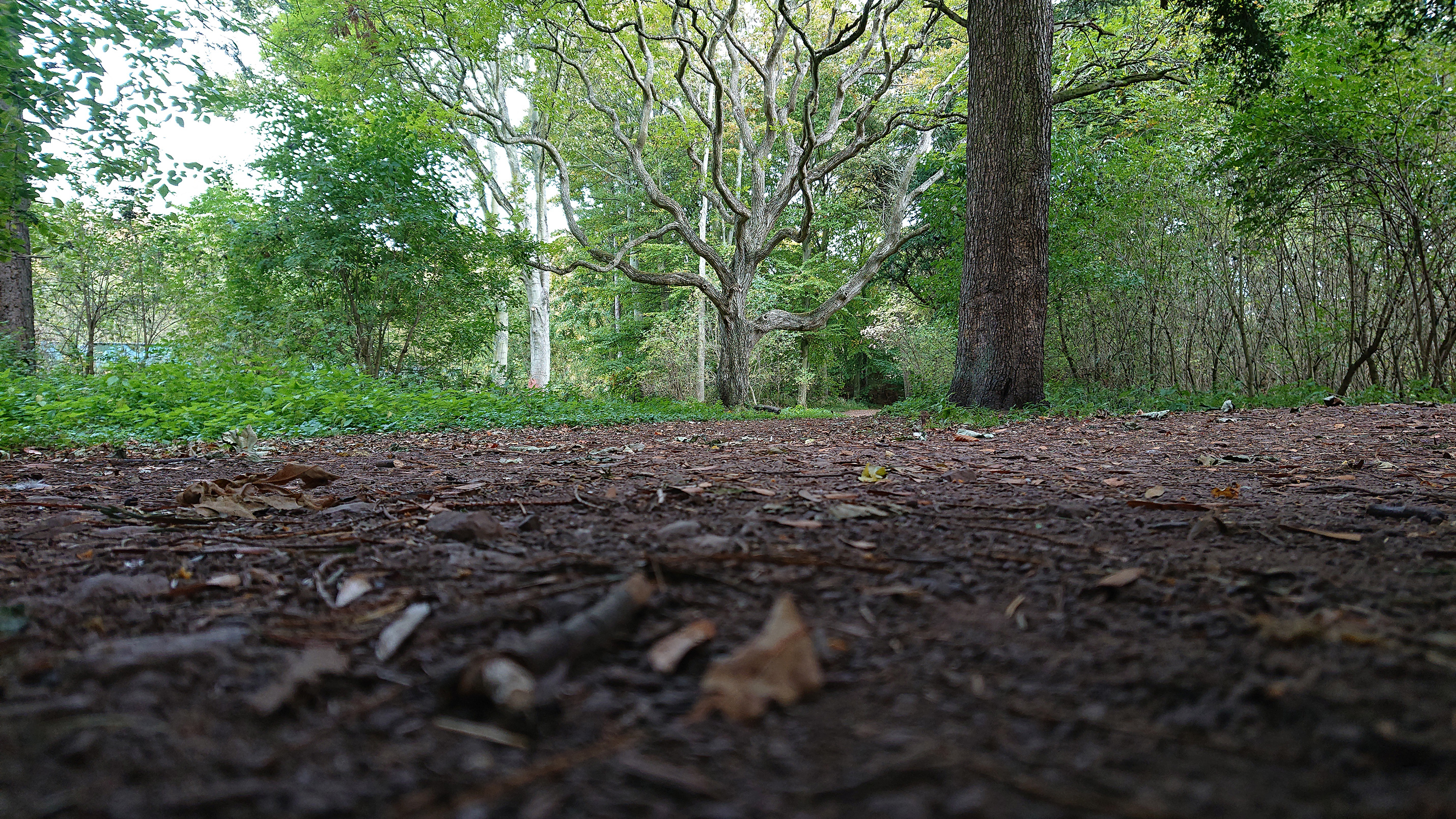- Great 6-inch OLED screen
- Capable camera
- Android 9.0 Pie
- Stereo speakers
- Stylish design
- Expensive
- Awkward fingerprint sensor placement
- Pre-installed bloatware
Sony persists with a biannual update schedule for its flagship Xperia range as it continues to play catch up in the phone market. After a radical redesign in the Xperia XZ2 earlier this year, the new Xperia XZ3 is more of a refinement. The headline feature is the 6-inch OLED screen — the first time Sony has used OLED in a phone — and it’s a solid upgrade from the 5.7-inch LCD in its predecessor. There’s also plenty of raw power, a decent camera, and all the extras you’d expect, but there are still flaws here, and at $900, Sony’s smartphone is up against some serious competition.
Let me entertain you
The first thing you’ll notice about the Sony Xperia XZ3 is the 6-inch OLED screen, which looks absolutely gorgeous. It’s pleasing to look at, whether you’re reading, watching movies, or gaming. The screen is so important, you can spend hours staring at it, so we’re glad Sony has focused some effort here.
It has an 18:9 aspect ratio and a resolution of 2,880 x 1,440 pixels, which translates to a pixel density of 537 pixels-per-inch. Those numbers put it on a par with all the top phones from Samsung, Google, LG, and Apple. We’ve looked at it side-by-side with the iPhone X and the Galaxy S9, and Sony’s display expertise really shows in the XZ3. It’s sharper than the iPhone and more realistic than the Galaxy S9. You also have the option to tweak the display to your liking by adjusting the color gamut, contrast, and white balance.
Watching 4K HDR content on this phone is a dream, and it also employs HDR upscaling and a few other tricks to enhance poorer quality video.
There’s a good reason that the best phones have adopted OLED, and it’s largely because it offers a much higher contrast ratio. This is because pixels can be turned off individually, so blacks are truly black. It’s most noticeable if you use your phone in the dark. Our XZ3 review unit is black, so dark scenes see the screen disappear into the frame.
The first thing you’ll notice about the Sony Xperia XZ3 is the 6-inch OLED screen, which looks absolutely gorgeous.
Enhancing the Xperia XZ3’s entertainment credentials are dual front-facing speakers that offer a decent amount of oomph. The stereo speakers feature Sony’s S-Force Front Surround and we were impressed with the volume and enhanced immersion they offer. Decent Bluetooth headphones are going to be better, and there is support for High-Res Audio here, but you sadly won’t find a 3.5mm audio jack.
Sony tries to further enhance the cinematic experience with its weird Dynamic Vibration feature, which prompts the device to vibrate in response to the on-screen action. We get the sense of this for gaming — it reflects the vibration in the PS4 controller which can help to draw you further into the action — but we don’t feel it works well for movies or music. We were also disappointed to find that it didn’t work for many of the games we tried. It would have been perfect to punctuate a crash in Asphalt 8, for example, but when it did actually work in Clash of Clans it didn’t really add anything useful. We think most people will end up turning it off.
Slick design you don’t want to put down
Sony overhauled its smartphone design with the XZ2 introducing something it calls “Ambient Flow,” which heralds a welcome embrace of smaller bezels and gentle curves. That design language continues in the XZ3, but it’s greatly refined. The bezels above and below the screen shrink just a little more.

This is a supremely comfortable phone to handle despite its large size. The XZ3 is very tall at 158 mm (6.22 inches) and it’s also a lot thicker than many other phones at 9.9 mm (0.39 inches) — the iPhone XS Max, for example, is 157.5 mm (6.2 inches) tall and 7.7mm thick (0.30 inches) respectively. It’s still a good deal thinner than the XZ2 phone range. The XZ3 doesn’t feel that much bigger, because Sony has cleverly curved the screen and the glass back into the metal frame and tapered the ends slightly.
We like the feel of the XZ3 in portrait or landscape, and it feels especially good when gaming, but it’s tricky to manage one-handed. It’s also very slippery — it will vibrate itself off table tops or slide out of your pocket when you sit down given the opportunity.
The big negative about the design is the fingerprint sensor placement. Sony just can’t get fingerprint sensors right: First they were inexplicably deactivated in the U.S. versions of its phones, then it decided to move them from the side of the phone to the back like most other manufacturers, but Sony’s placement is much lower down. In fact, the fingerprint sensor is almost in the middle of the back of the XZ3, which makes using it one-handed feel a little precarious. To make matters worse, the camera lens is exactly where you’d expect to find the fingerprint sensor – a mistake we made frustratingly often. Admittedly, this might be a bigger problem for tech reviewers who are frequently switching phones and get used to a certain placement.
This is a supremely comfortable phone to handle despite its large size.
All the buttons are on the right edge. Sony has kept a dedicated camera shutter button in the perfect place at the top right when you hold the XZ3 in landscape view. Up top you’ll find a wee tray for the MicroSD card and SIM, which can be pried open with a fingernail – no SIM tool required.
If we were to compare the Xperia XZ3 design to another phone, it’s probably closest to Samsung’s Galaxy line, but there’s just enough Sony style to give it its own identity.
Top-notch performance
Performance is almost becoming irrelevant on the Android scene, because virtually every flagship device, even the $500 Asus Zenfone 5Z, has Qualcomm’s Snapdragon 845 processor inside it. The Xperia XZ3 is no exception.
Precisely how much RAM a smartphone needs is debatable, but Sony makes do with 4GB in the Xperia XZ3. That’s going to be enough for most people, and we didn’t run into any real issues navigating around or loading up apps, but if you consider that much cheaper phones like the Zenfone 5Z and OnePlus 6 are packing 6GB of RAM you may expect Sony to include a little more.
The benchmarks make it clear how fast this phone is:
- AnTuTu 3DBench: 281,131
- Geekbench 4 CPU: 2,354 single-core, 8,804 multi-core
- 3DMark Sling Shot Extreme: 3,329 (Vulkan)
Those results put in on a par with devices like Samsung’s Galaxy Note 9 and suggest that the XZ3 is a little faster than rivals like the HTC U12 Plus and LG V40 ThinQ.
The only issues we had with the XZ3 were related to Sony’s software extras. Side Sense allows you to double tap on the side of the phone to access a quick menu of regularly used apps and settings that are supposed to change based on what you normally use at that time of day. We mostly triggered Side Sense by accident and often found it took a couple of attempts to trigger it deliberately. We didn’t find it all that useful, but your mileage may vary.

More useful, considering the size of this phone, is the shortcut to one-handed mode, which slides everything down a bit to make it easier to reach.
Sony also added a gesture shortcut that enables you to trigger the camera by holding the phone up in landscape, but we found that we triggered this by accident quite a lot too. You have to tap in the middle to fully open the camera, so it doesn’t feel like much of useful a shortcut given that you can just hold down the dedicated shutter button to launch into the camera. Thankfully, you can turn off both features if you don’t like them.
Android 9.0 Pie doesn’t need toppings
We have to give Sony kudos for including the latest Android 9.0 Pie in the Xperia XZ3. Many of its competitors are releasing phones right now with Oreo and no firm timescale on updates. It offers some incremental improvements over earlier versions, and Sony’s UI is a relatively light layer on top.
What we don’t like is the unnecessary addition of bloatware. Our XZ3 asked if we wanted certain apps during setup, which is a great way of offering bloatware without forcing it. Sadly, when we got through the setup process we found several other apps were already pre-installed, including Kobo Books, Facebook, Netflix, and Sony’s Album, Weather, and Xperia Lounge apps. The preinstalled apps will vary by region — in the U.S., we mostly saw Sony’s apps installed.
You only get 64GB of internal storage here, though there is room for a MicroSD card.
Capable camera falls short
It’s a little surprising to find a single-lens 19-megapixel main camera in the Xperia XZ3. Most manufacturers are moving towards dual or even triple-lens main cameras, and Sony even adopted a dual-lens camera in the XZ2 Premium.
We found the XZ3 takes good shots with plenty of detail and accurate colors when the lighting is good. In low light and indoors, you’ll see some graininess and noise creeping in, which isn’t a big surprise since the f/2.0 aperture isn’t as wide as the f/1.8 you see on other flagships. It also struggles to cope with high contrast scenarios, overexposing some areas when the environment isn’t well lit.
If you’re coming from an older phone, we think the camera will satisfy, but it doesn’t match some of the other flagships in terms of low-light performance, zoom, or general versatility. The Samsung Galaxy S9 Plus, the Huawei P20 Pro, the iPhone XS Max, and the Google Pixel 2 XL will all consistently outperform the Xperia XZ3.
Sony’s camera hardware is widely used in the smartphone industry, but it seems to struggle with the software and tuning of that hardware. The camera app in the XZ3 is a little clunky and slow. We also found the Bokeh mode hard to use as it takes a long time to snap two shots and create a blurred background. It fails if you or your subject move too much. We actually got better bokeh results with the normal auto mode.
One area where the Xperia XZ3 camera does well is video. It can capture 4K HDR footage and there’s a really fun slow-motion mode that hits 960 frames per second in Full HD. You do have to choose the right moment to trigger the slow motion, but we enjoyed the results.
The front-facing camera is also good, with a dedicated portrait mode, and a capable 13-megapixel sensor.
Battery life is average
We can’t help feeling that Sony should be able to squeeze a bigger battery into a phone this thick, but the 3,330mAh battery in the XZ3 kept us going until the end of each day. Just like almost every other phone out there, you’ll have to charge it up every night. We generally had between 20 and 30 percent left at bed time, and that’s with medium to heavy use.
The fast charging is really fast, giving us 50 percent in around 30 minutes with the included charger and cable. There’s also support for Qi wireless charging, though it’s noticeably slower.
Price, availability, and warranty information
The Sony Xperia XZ3 costs $900 in the U.S. or 700 British pounds in the U.K. It’s on sale now and you can buy it from Amazon
It comes with a standard one-year limited warranty for design defects or failure to operate.
Our Take
The Sony Xperia XZ3 is a slick smartphone with a stunning display backed by stereo speakers. It’s one of the best phones around for entertainment. We’re pleased to find the latest version of Android onboard, but Sony doesn’t add much value with its software. The battery life is average, and the camera performance lags behind other devices in this price range.
Is there a better alternative?
If you’re a Sony fan, then this is the phone you’ve been waiting for. It will also serve you well if you primarily use your phone to watch video and play games. But if photography is one of your main priorities, then we think you should look elsewhere.
Samsung’s Galaxy S9 Plus has a very similar style, a better camera, and comes in cheaper at $840. If the camera is your main thing, then the Huawei P20 Pro, also cheaper at around $800 now, is very hard to beat (though it’s not available in the U.S.). Android fans should also consider holding on for the forthcoming Google Pixel 3 XL, which will run stock Android and likely have one of the best cameras you can get.
How long will it last?
You’ll want a case for this slippery smartphone if you expect it to last. But water should be no problem: This phone scores an IP65 and IP68 rating, so it can deal with jets of water and with complete submersion for short periods of time. We expect it to get software updates for a couple of years or so and Sony has been comparatively fast of late to update its phones. We think you’ll get three years out of this phone, quite possibly longer if you’re careful.
Should you buy it?
Yes. The strengths balance out the weaknesses in the XZ3, and if they align with what you want in a phone, the steep price is worth paying.











